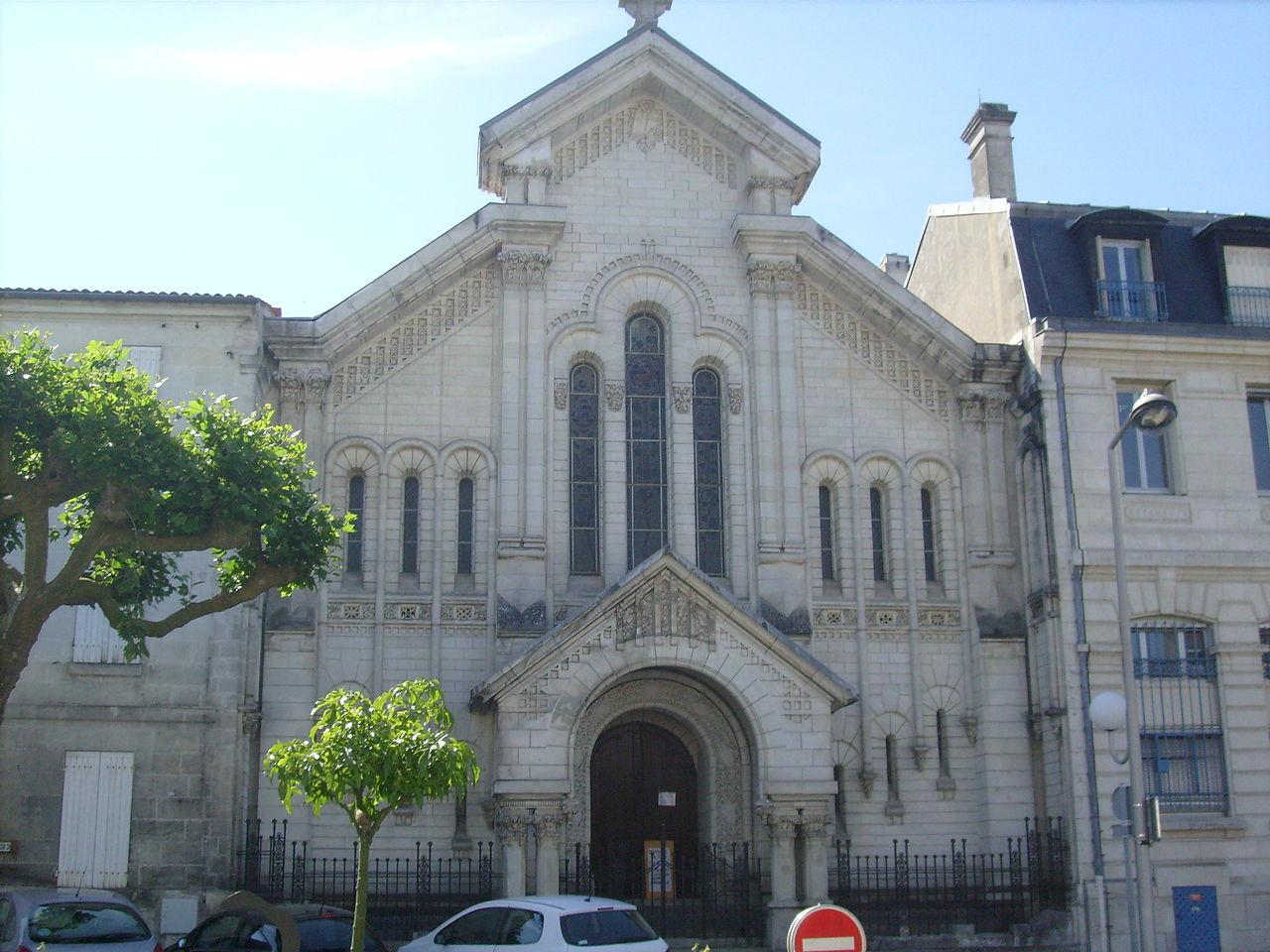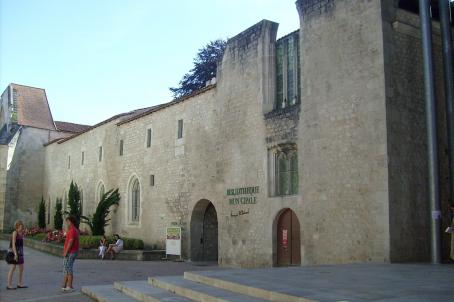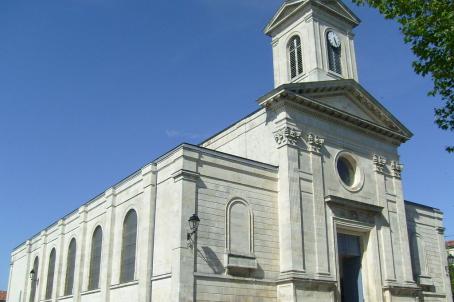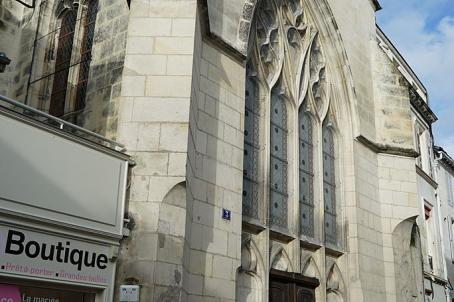Protestant church
The Protestant church, completed in 1906, replaced many pre-existing sanctuaries. A first temple was built at the beginning of the 17th century, outside the former walls of Saintes. Inaugurated in 1602, it was destroyed in 1685 after the publication of the Edict of Fontainebleau. The existence of a third temple is attested in 1802, the latter being used for worship until the beginning of the 20th century. The construction of the present building was entrusted to the Parisian architect Augustin Rey, whose project combines neo-Romanesque and neo-Byzantine influences.






